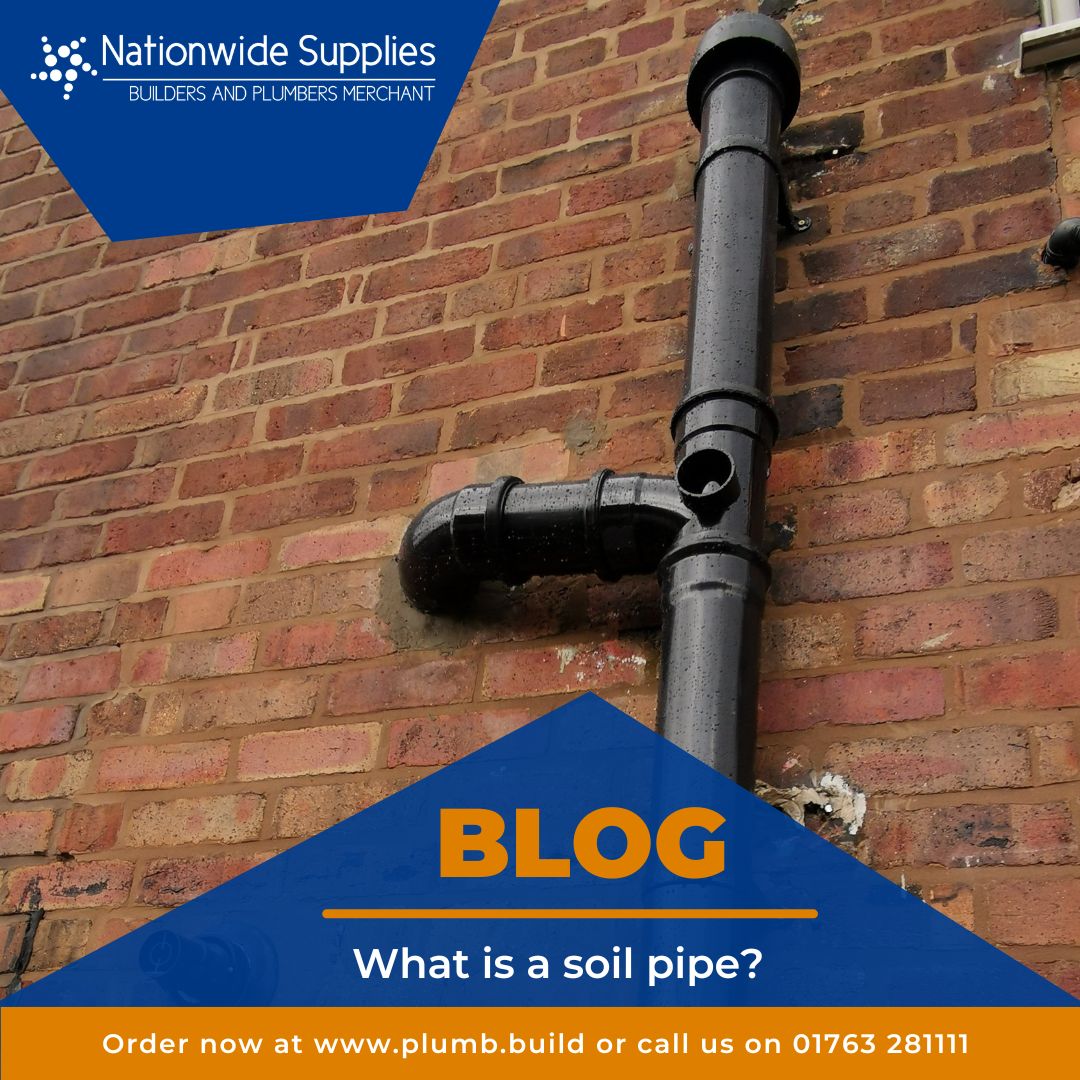Posted: 14th October 2024 | Author: Adam Brown | Category: Bathroom
Back to news
Soil and waste pipes are a key part of household plumbing systems, performing integral tasks without which homes would be a lot less comfortable to live in. Looking after these systems is the best way to keep them in good condition for longer - but to do so, you need to know at least the basics of what you’re working with.
Below, we explore what soil pipes are and how they work.
Put simply, a soil pipe is a pipe that allows sewage and wastewater to be carried away from plumbed-in facilities and into the sewer system or a soil drain. Although the name soil pipe might call to mind agricultural links, in this case the term soil refers to soiled liquids - i.e. liquids which contain solid waste. For this reason, soil pipes are required for plumbing in toilets, bidets and urinals.
Once upon a time, soil pipes were made out of cast iron - with some even containing asbestos! These materials required careful handling during installation and maintenance, making them tricky to work with. Plus, although cast iron is generally a resilient material, it can easily rust when exposed to the elements and the waste within. These days, soil pipes are usually made from uPVC - long-lasting, hard-wearing and easier on the wallet.
If you’ve looked into plumbing at all, you might be aware that there’s also such a thing as a waste pipe. This performs a similar function to a soil pipe, but there are differences - and you certainly wouldn’t want to confuse the two when it comes to having one replaced or installed.
While a soil pipe is designed for liquid and solid waste, a waste pipe is designed only for the transportation of liquid waste. It’s also best reserved for the kind of wastewater that doesn’t smell too strongly. This makes waste pipes better for use with sinks, baths, washing machines and dishwashers - and any other appliance that only has to deal with liquid wastewater. Since there’s no reason for any solid waste to pass through a waste pipe, they can be narrower than soil pipes, which makes them easier to conceal when installing a kitchen, WC or bathroom.
Soil pipes can also be referred to as soil vent pipes, and there’s a good reason for this. A soil pipe runs from an underground drainage system up to the top of a home, sometimes coming out in the roof with a specially designed slate connector. Here, at the top of the pipe, there will be a soil vent - literally a vented component which allows unpleasant smells to be released and dissipate without offending anyone’s senses.
This venting system isn’t present on waste pipes, since they don’t carry the same kind of waste as soil pipes. The water from your washing up, your laundry and your post-workout shower might not be clean enough to drink, but it doesn’t tend to give off the same level of odour as the waste you’d find in a soil pipe.
Though the sensory benefits of including a vent on a soil pipe are clear, that’s not the only upside to having one in place. The vent in a soil pipe works to ensure that your home’s drainage system stays at the right pressure. If this didn’t happen, pressure could build up every time you flushed a toilet - which could result in a burst U-bend that not only creates a big, unpleasant mess, but also represents a costly repair job.
As well as a vented soil pipe, you’ll also have something called a pan connector - or more than one, depending on the number of toilets or other forms of sanitaryware in your home. Aptly named, pan connectors are the component which connects your toilet bowl - or ‘pan’ - to your soil pipe so that waste can be carried away.
If you’re looking to source pan connectors for a bathroom renovation or repair, it’s important to do your research before making a purchase. There is a huge amount of variety between bathrooms in terms of layout and space, meaning that while a given pan connector might fit perfectly in one bathroom, it may not be the ideal choice in another.
Fortunately, pan connectors are sold in a range of shapes and sizes to accommodate almost every bathroom imaginable. You might need a pan connector that:
… or is tailored in a different way. If you’re at all unsure about what kind of pan connector you need, it’s best to speak to a qualified plumber who can assess your bathroom area and let you know your options.
Back to news
The Author: Adam Brown
With a background as a Mechanical Engineer, I started Nationwide Supplies alongside my brother with a vision to modernise what seemed a stuck-in-its-ways industry in the builders merchant sector. Since 2011 it has been my goal to source quality products at the correct prices to be able to offer a saving to customers along with high quality customer service which offers quick delivery and superior technical knowledge in the industry.